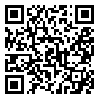Mon, Dec 29, 2025
[Archive]
Volume 20, Issue 3 (September 2024)
IJEEE 2024, 20(3): 78-91 |
Back to browse issues page
Download citation:
BibTeX | RIS | EndNote | Medlars | ProCite | Reference Manager | RefWorks
Send citation to:



BibTeX | RIS | EndNote | Medlars | ProCite | Reference Manager | RefWorks
Send citation to:
Biowei G, Adekola S A, Amusa K A. Millimeter Wave Energy Absorption by Human Tissues: Evaluation of Tissue Penetration. IJEEE 2024; 20 (3) :78-91
URL: http://ijeee.iust.ac.ir/article-1-3258-en.html
URL: http://ijeee.iust.ac.ir/article-1-3258-en.html
Abstract: (2378 Views)
Presented in this paper is an evaluation of human tissue penetration by millimeter wave (mmW) energy, particularly at 30, 35, 40 and 45 GHz. Numerical simulations show that the penetration depths in the tissue are (0.1000, 0.0937, 0.08869 and 0.08882) mm at the aforementioned frequency, respectively. It is also demonstrated that all mmW at those frequencies attenuate to zero at the epidermis which is the layer adjacent to the skin surface, without getting into the dermis which is the next layer. Crucially, these discoveries present fresh, previously unmentioned data within the current research literature. Furthermore, at the lower frequency of 24 GHz, computer simulations presented show that the propagating wave penetrates deeper (depth of 0.12 mm) and attenuates to zero at the dermis. This shows that the depth of penetration increases further at lower frequencies which strongly conforms to the principles of physical reasoning, thereby bolstering the reliability of the findings presented in this paper. The results collectively indicate that the absorption of mmW into the human tissue have limited significance when assessing compliance with electromagnetic field standards at mmW frequencies. It is reinforced in this paper why the human skin reduces the harmful effects of ultra-violet radiation. To lend credence to our formulation, certain aspects of the results obtained in this investigation when compared with similar results in the literature, show good agreements.
Type of Study: Research Paper |
Subject:
Communication Systems
Received: 2024/04/16 | Revised: 2024/10/06 | Accepted: 2024/08/20
Received: 2024/04/16 | Revised: 2024/10/06 | Accepted: 2024/08/20
| Rights and permissions | |
 |
This work is licensed under a Creative Commons Attribution-NonCommercial 4.0 International License. |







